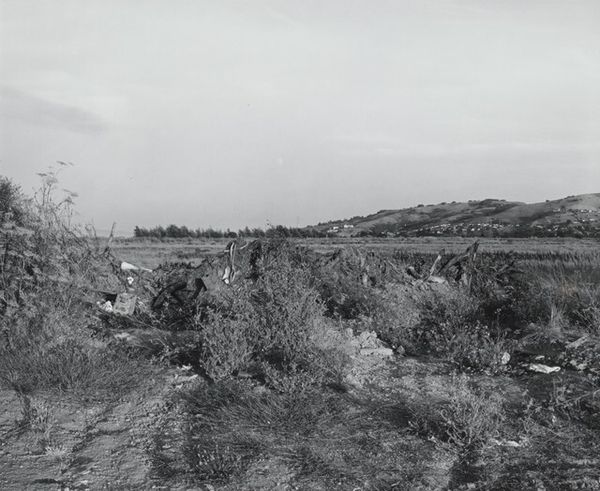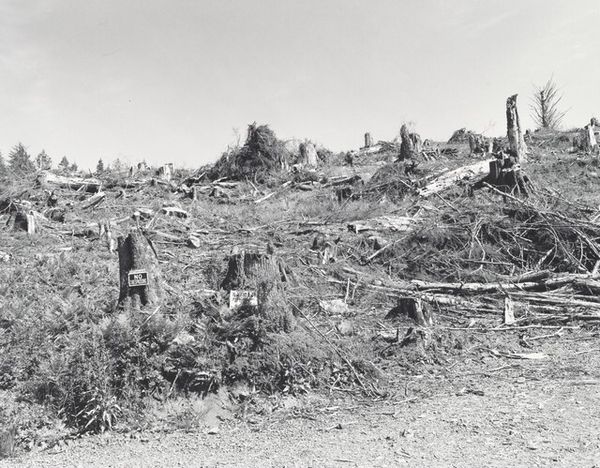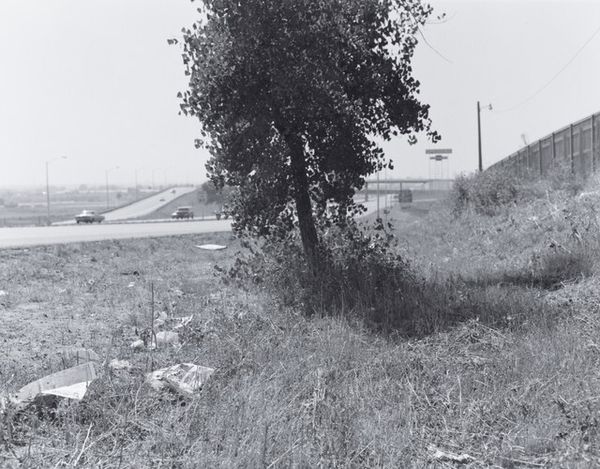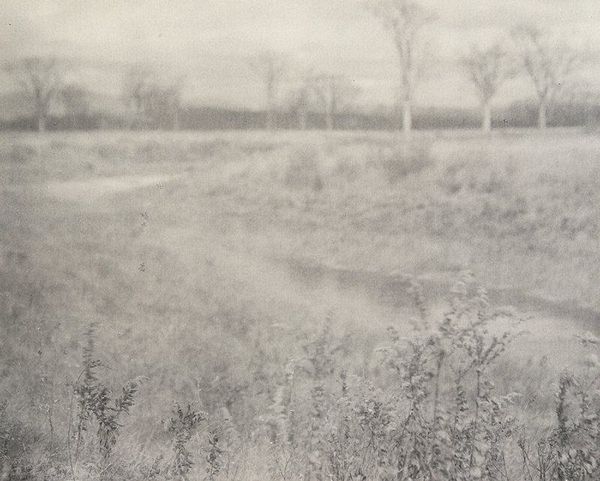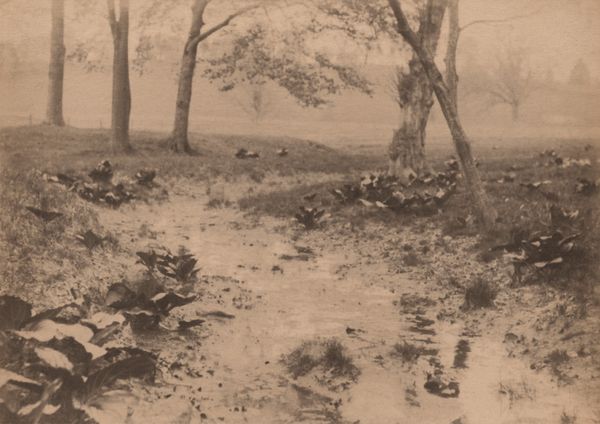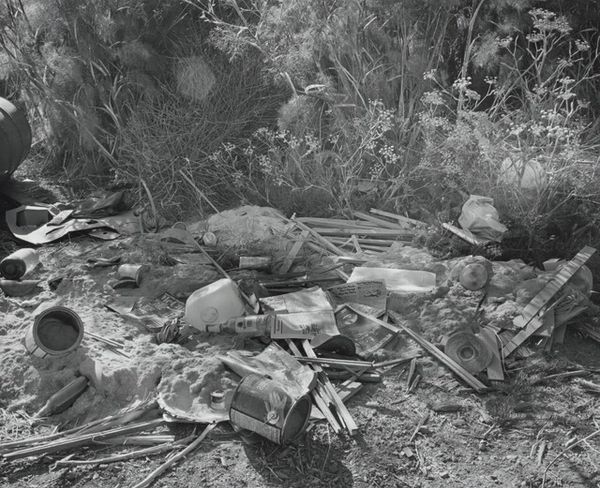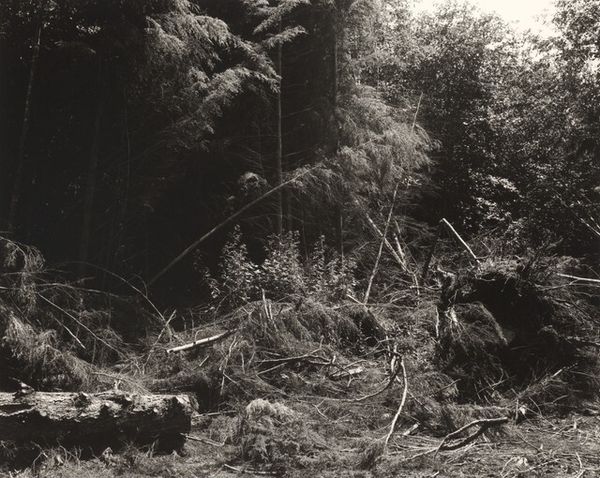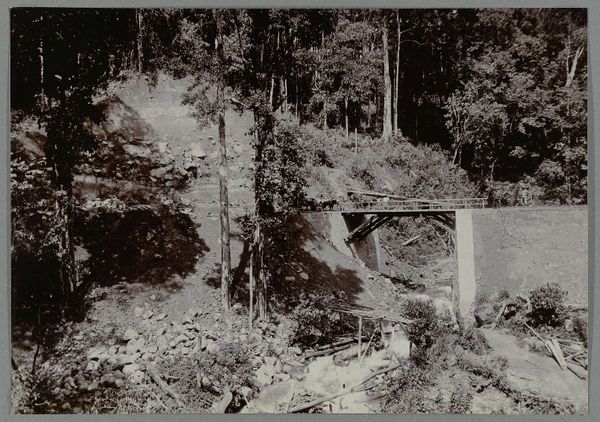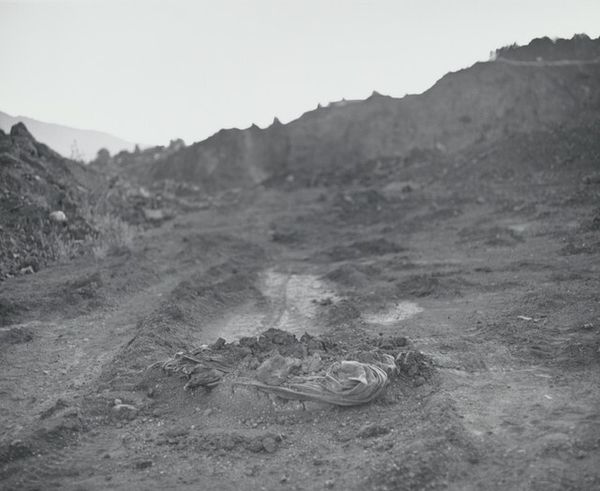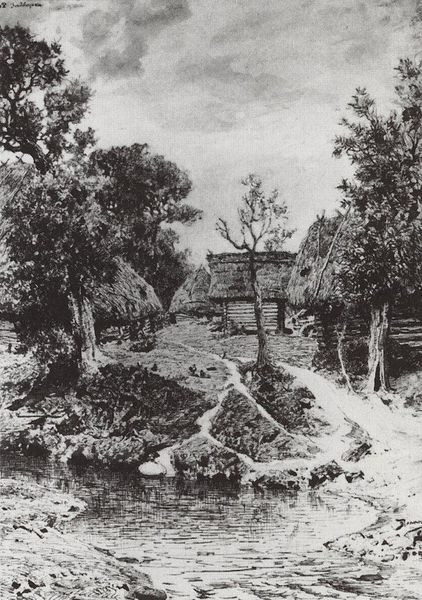
photography
#
conceptual-art
#
landscape
#
landscape
#
photography
#
environmental-art
#
monochrome
#
monochrome
Dimensions: image: 18.8 × 22.9 cm (7 3/8 × 9 in.) sheet: 20.32 × 25.4 cm (8 × 10 in.)
Copyright: National Gallery of Art: CC0 1.0
Lewis Baltz made *San Quentin Point, no. 4* as an analogue photograph printed on paper. At first glance, the image appears to be a simple landscape. But looking closer, you begin to notice the refuse scattered across the foreground. The rough texture of the ground, and the tangled bushes along the edge of the water, give way to a more profound meaning. Baltz made many photographs showing the impact of human activity on the natural landscape, and his work can be seen as a critique of industrialization. The photograph makes the viewer question what sort of labor happened nearby, and what kind of waste products it generated. By treating photography as a means of documenting environmental degradation, Baltz was implicitly challenging the traditional aesthetic of landscape photography. His choice of humble materials and straightforward composition asks us to consider the social and environmental context in which the image was produced. In the end, Baltz insists that we see the world around us, for better or for worse.
Comments
No comments
Be the first to comment and join the conversation on the ultimate creative platform.
